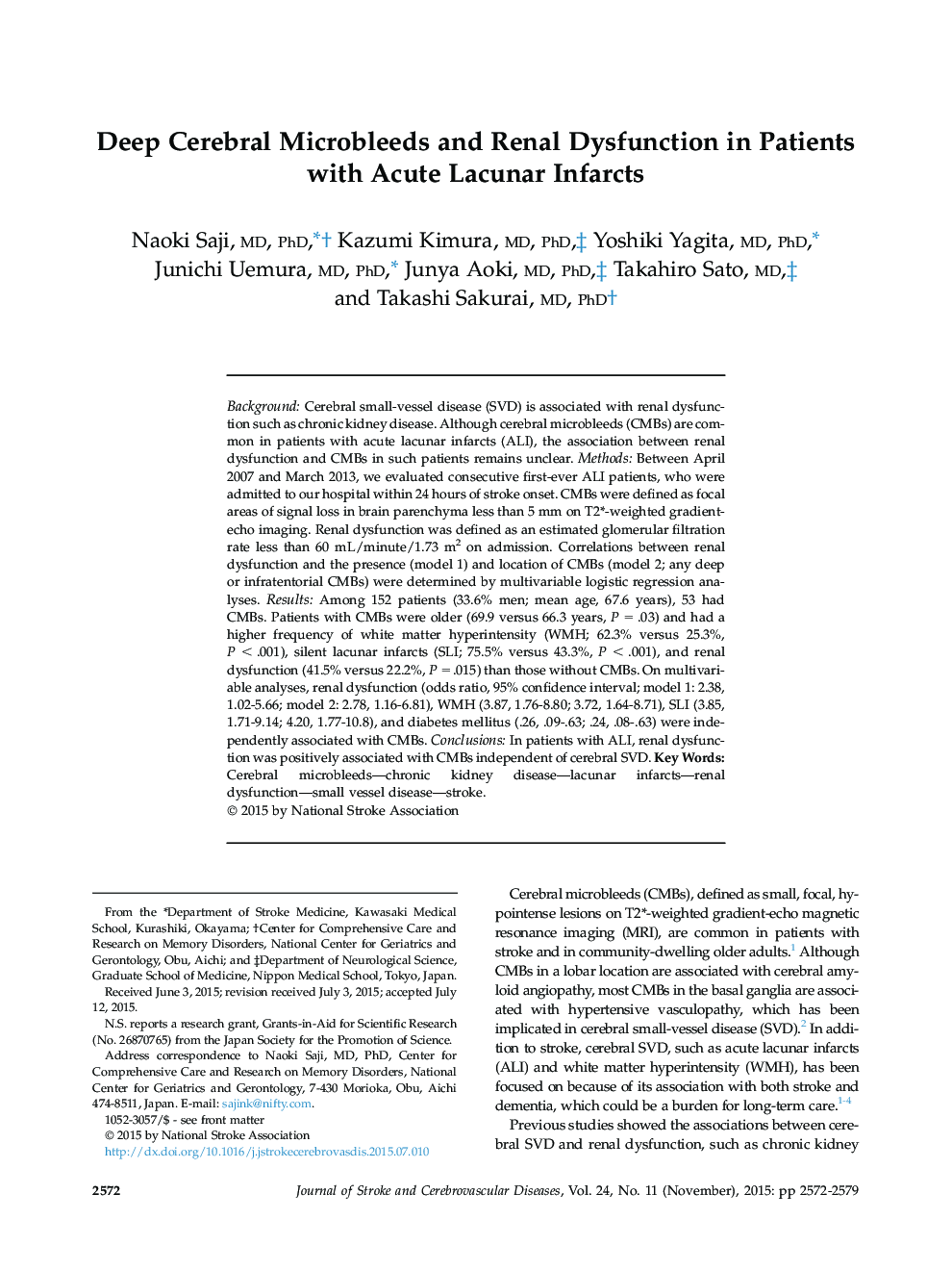| Article ID | Journal | Published Year | Pages | File Type |
|---|---|---|---|---|
| 2702429 | Journal of Stroke and Cerebrovascular Diseases | 2015 | 8 Pages |
BackgroundCerebral small-vessel disease (SVD) is associated with renal dysfunction such as chronic kidney disease. Although cerebral microbleeds (CMBs) are common in patients with acute lacunar infarcts (ALI), the association between renal dysfunction and CMBs in such patients remains unclear.MethodsBetween April 2007 and March 2013, we evaluated consecutive first-ever ALI patients, who were admitted to our hospital within 24 hours of stroke onset. CMBs were defined as focal areas of signal loss in brain parenchyma less than 5 mm on T2∗-weighted gradient-echo imaging. Renal dysfunction was defined as an estimated glomerular filtration rate less than 60 mL/minute/1.73 m2 on admission. Correlations between renal dysfunction and the presence (model 1) and location of CMBs (model 2; any deep or infratentorial CMBs) were determined by multivariable logistic regression analyses.ResultsAmong 152 patients (33.6% men; mean age, 67.6 years), 53 had CMBs. Patients with CMBs were older (69.9 versus 66.3 years, P = .03) and had a higher frequency of white matter hyperintensity (WMH; 62.3% versus 25.3%, P < .001), silent lacunar infarcts (SLI; 75.5% versus 43.3%, P < .001), and renal dysfunction (41.5% versus 22.2%, P = .015) than those without CMBs. On multivariable analyses, renal dysfunction (odds ratio, 95% confidence interval; model 1: 2.38, 1.02-5.66; model 2: 2.78, 1.16-6.81), WMH (3.87, 1.76-8.80; 3.72, 1.64-8.71), SLI (3.85, 1.71-9.14; 4.20, 1.77-10.8), and diabetes mellitus (.26, .09-.63; .24, .08-.63) were independently associated with CMBs.ConclusionsIn patients with ALI, renal dysfunction was positively associated with CMBs independent of cerebral SVD.
